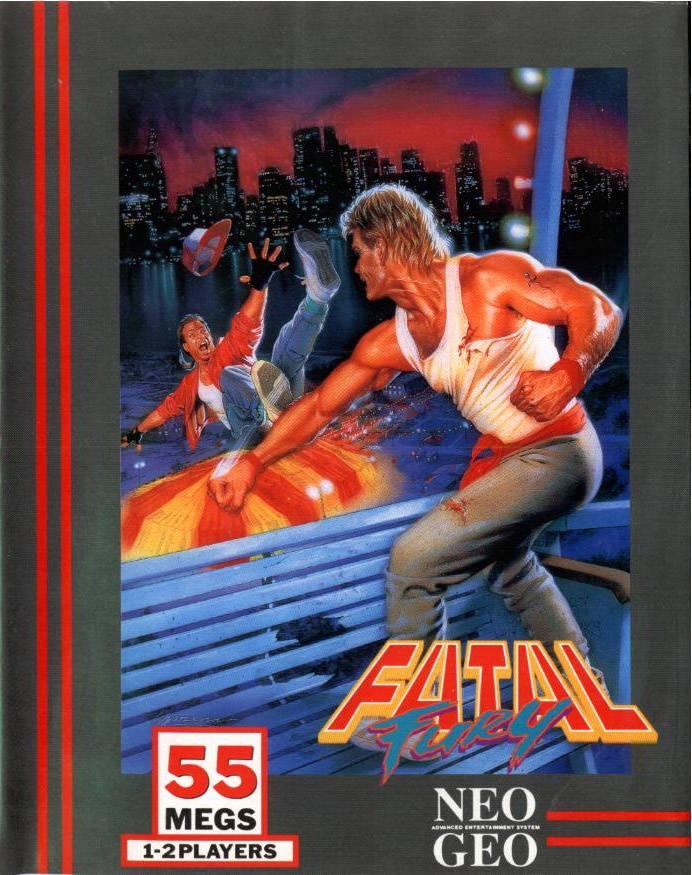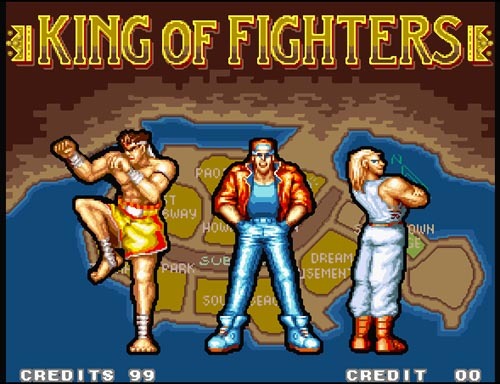
The nineties were a high time for fighting games. Nothing was more fun than popping quarters into your favorite game and beating the snot out of your buds in virtual reality without getting in trouble. Unless one of them was the raging gamer. Street Fighter II’s success has led to other companies coming out of the woodwork to challenge Capcom. One of those companies would become their rival. Ladies and gentlemen, enter the battleground that is Time Warp Review and let’s throwdown with a look at Fatal Fury: King of the Fighters.

After the success of his first title Street Fighter, creator Takashi Nishiyama began development on the game that he envisioned to be a spiritual successor to the game that birthed Ryu and Ken. Fatal Fury focused on timing your special moves while Street Fighter II emphasized on combos. Several of the series’ staple characters appear in the game including Terry and Andy Bogard, their friend Joe Higashi and the organizer of the King of the Fighters Tournament, crime boss Geese Howard. Fatal Fury is in some ways similar to Street Fighter. First of all, only the Bogard Brothers and Joe are selectable characters who, like Ryu and Ken, fight their way through the tournament before challenging Geese Howard in the final match. Just like Sagat had Adon as an underling, Billy Cane served under Geese Howard as his personal bodyguard. As with many fighting games, gameplay consisted of best two-out-of-three matches. The play controls consist of an eight directional joystick and three attack buttons: punch, kick and throw. Holding down the button changed the strength of the attack. What separates Fatal Fury from other fighting games is being able to fight in both the foreground and background. With a press of a button, you can switch your character between the two planes, however, this option is only available in head-to-head matches. In single player, you must wait for the CPU fighter to move into the background before joining them. Another aspect of the game is that a second can join the battle in a tag team match against the AI opponent rather than a head-to-head match which is available once the AI opponent is defeated.

Fatal Fury has similarities to Street Fighter as mentioned before. Geese Howard murdering Joe Bogard, Terry and Andy’s father who fought in the tournament 10 years ago, mirrors that of how Dan Habiki’s father Joe was killed be Sagat. Billy Kane uses a bo staff while Eagle (Street Fighter I) uses kali sticks. What’s more is that both characters are from England. Fatal Fury also featured an elderly fighter (Tung Fu Rue), and two Maui Thai fighters (Joe Higashi and Hwa Jai) which is the same as Street Fighter’s list (Gen, Adon and Sagat). The game was released November 25, 1991 by SNK for Neo Geo arcade cabinet and home systems, in close proximity to Capcom’s sequel to Takashi Nishiyama’s original title, Street Fighter II: The World Warrior. While several game magazine’s praised the game, Maximum thought differently about Fatal Fury, commenting that the game failed to offer any real competition for Street Fighter II in either playability or character selection. They also go on to say that the only redeeming quality is Fatal Fury’s tag team feature and movement between foreground and background, following up with, “the slow action and the disgracefully difficult fireball motions make special moves something of a rare occurrence.” This is true. Pulling off the special moves was ridiculously hard.
Nevertheless, Fatal Fury went on the spawn a more successful sequel, Fatal Fury 2 and other subsequent follow ups including the King of Fighters series. The game also set the popularity standard for each character. Series antagonist Geese Howard is regarded as “one of the most difficult bosses to beat” and “Greatest Video Game Villain of All Time” before losing out to Metroid’s Mother Brain. Joe Higashi and Terry Bogard would become popular with fighting game fans with Terry becoming the face of Fatal Fury and SNK much in the same manner as Ryu for Capcom and the Street Fighter series. As for Fatal Fury itself, along with rival Street Fighter II and Mortal Kombat, which released in 1992, SNK’s flagship series helped jump start the fighting game revolution in the decade of ripped denim jeans and saxophone playing senators. And King of Fighters keeps that tradition going to this day.
![]()






